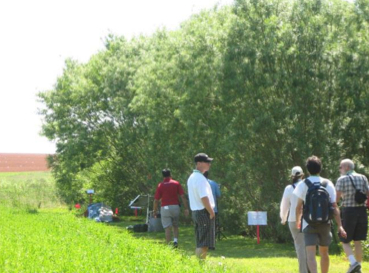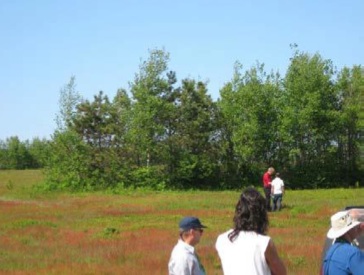The sun shone, the food was in abundance, and poplar and willow science, technology and practice were in the air as participants gathered for the 13th North American Agroforestry Conference in PEI in June, 2013. The annual business meeting of the Poplar Council of Canada took place in conjunction with the conference.

The technical sessions included 64 invited and volunteer oral presentations were given and 25 posters, all under the general theme of ‘Agroforestry – innovations in agriculture’. While not all the presentations were directly concerned with poplars or willows, all were relevant to the interests of Poplar Council members. Several presentations were given by PCC members.
During the conference, a full day was devoted to field visits to agroforestry sites in PEI. One of the highlights of the field day was a visit to a riparian buffer and willow biomass variety trial hosted by Agriculture and Agri-Food Canada scientist Dr. Raju Soolanayakanahally. Raju is a PCC Director and also on the AFTA Board of Directors. The buffer plantation is designed to mitigate high nitrate leaching into water bodies from adjacent heavily-fertilized fields growing primarily potatoes. The willows were able to benefit greatly from the run-off, achieving the highest recorded willow yield in Canada of 3.2 kg/ha/year (measured on an individual tree basis). Though this particular buffer plantation, established in 2006, could not be fully harvested due to PEI’s provincial regulations applying to a zone within 15 m of water, other trial plots are testing willow varieties for biomass production for energy. Harvested on a 3- or 4-year coppice rotation, yields of up to 60 t dry matter / ha are possible. The primary market for the biomass is seen as farm use, displacing high-priced fossil fuels.

A one-day pre-conference tour started in Fredericton, New Brunswick and at the end of the day brought the 20 participants to the conference site in Charlottetown. In Fredericton, the Canadian Bioenergy Centre, part of the Wood Science and Technology Centre of the University of New Brunswick, was visited. The Centre develops and tests equipment and technology related to use of wood for energy, particularly in the form of pellets, and includes a lab accredited for testing pellets against North American and European standards.
The Poplar Council annual business meeting included discussion about the possibility of changing the name of the Council to give explicit recognition of willows was discussed. The 2014 annual meeting will be held in Vancouver in conjunction with the 6th International Poplar Symposium on July 20-23, 2014.

The format, facilities and scale of the 13th NAAC provided ample opportunities in a relaxed atmosphere for informal networking amongst the participants, while the scientific and technical content of the conference was stimulating and wide-ranging. Traditional Maritime hospitality was offered by the hosts and greatly appreciated by the participants. The highlight for many was an evening ‘kitchen party’ featuring fresh lobsters, mussels and oysters, and associated trimmings, followed by live entertainment with fiddle and guitar music, singer and dancers.


